Peaceful Solitude
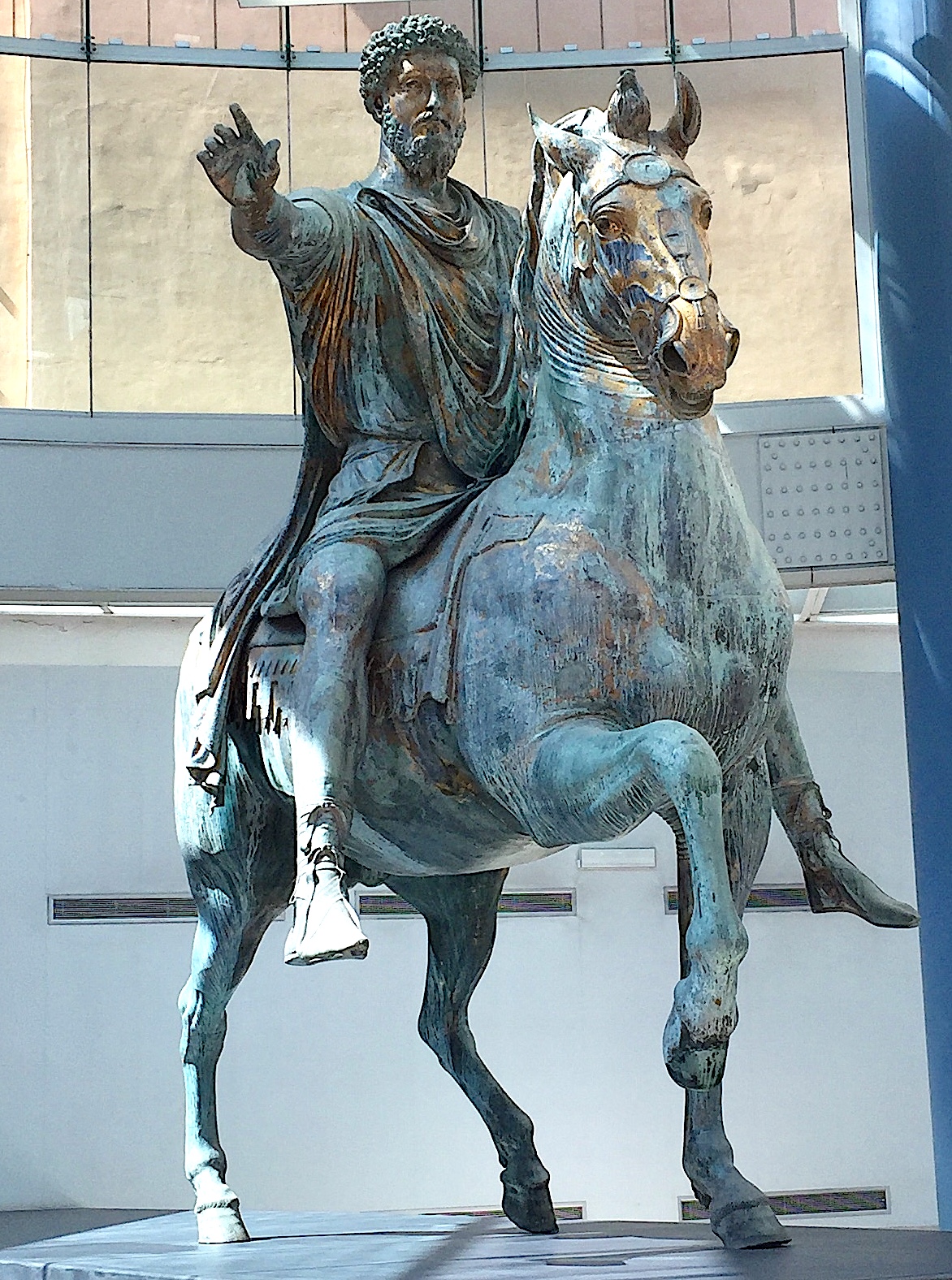
A guard pored over a crossword puzzle and occasionally stood up to stretch; his regular yawns were the only sound to disturb Marcus Aurelius, his horse and me in the semicircular courtyard of Rome’s Capitoline Museums.
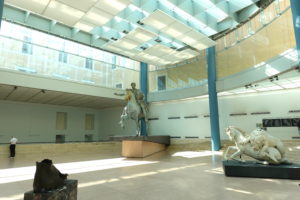
It was this week an enormous privilege to spend more than an hour completely alone with Marcus Aurelius and his noble horse. Under normal circumstances I would have been swarmed by visitors as I stood, quite alone and in wonder in a museum opened to the public in 1734 under Clement XII. It was the first public museum in the world.
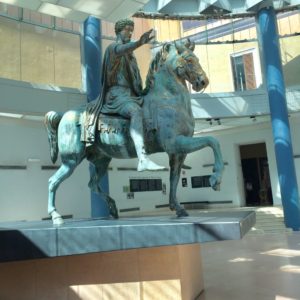
As the courtyard is made of glass, on a sunny day the bronze patina of Marcus Aurelius and his horse shines gold, and from some angles blue. Light exudes from it, and shimmers over it.
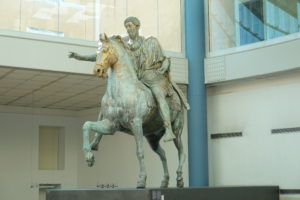
The pair was cast in 175 AD and may have originally been positioned in the Forum or Piazza Colonna; they avoided the usual fate of being melted down for repurposing as Marcus Aurelius was misidentified as Constantine the Great, the Christian emperor.
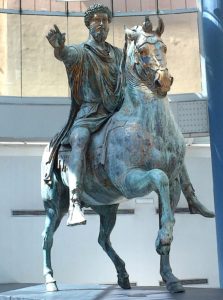
In the medieval era, Marcus Aurelius and horse was one of the few Roman statues to remain on public view.
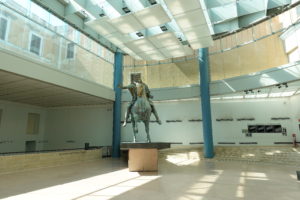
They were moved to the Piazza del Campidoglio (Capitoline) during Michelangelo’s s redesign of the hill. Michelangelo created a special pedestal for the statue and in 1539 positioned it.
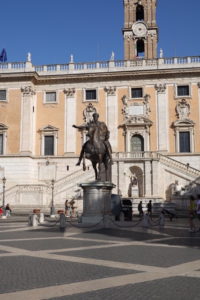
The victim of centuries of weathering, Marcus and his horse were in 1981 removed and taken to the Istituto Centrale del Restauro conservation studio along the river in Trastevere. I remember the sense of emptiness of seeing the perch empty, and visited the pair during restoration; it was disarming to see the emperor, sitting, separated from his horse, in a special harness suspended by chains from the ceiling of the workshop. Seven years later, they were returned, to the overwhelming delight of Romans, and placed temporarily in a room off the Campidoglio square as it was apparent that the statue could not be allowed to oxidize further in the open air. The idea of making a copy and placing that replica on the original pedestal then was born, including to recreate an attempt at the original patina and golden coating. Romans disdain the statue as a sorry fake, and look piteously at the uninformed who mistakenly believe the copy to be the real thing.
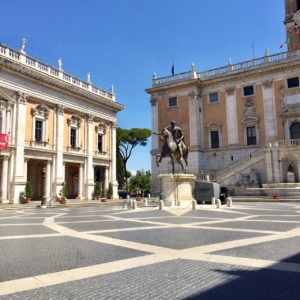
In 1997, the decision was made to move the original Marcus Aurelius to a new space. As plans for this new courtyard developed, a series of exciting archaeological excavations on that site unearthed substantial traces of settlements from the Bronze Age through the Renaissance, documenting 1000 years of life on the hill and creating a frame of periods. Such, thus is the courtyard : perfect for its contents (including the sublime Lion Attacking a Horse, much admired by Michelangelo, and from 325-300 BC) and with additional context provided by the dramatic new excavations.
Once in the Capitoline Museums, of course, I wandered from empty room to empty room, and admired ancient sculptures that I loved. Having them almost entirely to myself allowed for an intimacy that was sweet and welcome.
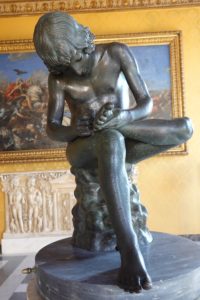
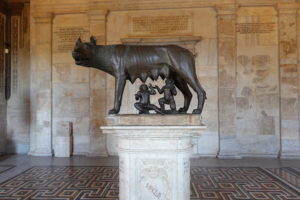
![]()
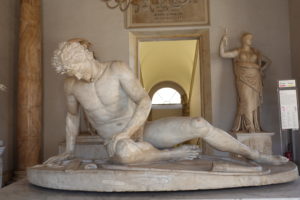
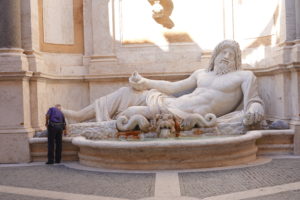
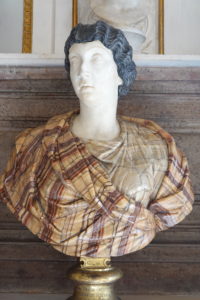
The final images are of a view that is to me new each time I see it, though all my life I’ve been admiring this panorama : over the Roman Forum and Fora of Julius Caesar, August and Trajan to the Colosseum. This is the view we introduce on their first evening to every Insider’s Italy traveler who is visiting Rome for the first time. The emozione at sunset, when the waning light illuminates this scene with a diffused glow, is the stuff of dreams.
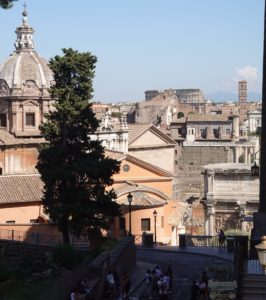
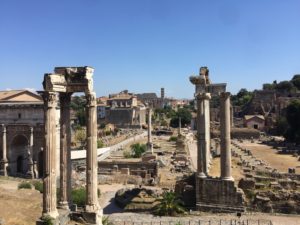
Happy Labor Day ! “Take rest. A field that has rested gives a bountiful crop.” – Ovid.
www.insidersitaly.com

Meet Marjorie
Insider’s Italy is an experienced family business that draws on my family’s four generations of life in Italy. I personally plan your travels. It is my great joy to share with you my family’s hundred-year-plus archive of Italian delights, discoveries and special friends.
